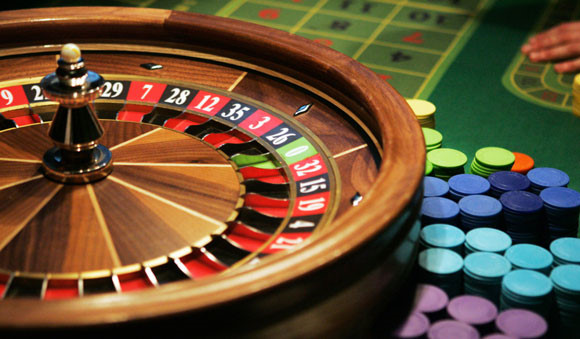This system was first "discovered" by Henry Labouchere, an English gambler who traveled the world playing it until he died in 1912. His discovery was actually created in the eighteenth century by a French mathematician, named the Marquis de Condord.
With Labouchere, also known as the Cancellation System, the player sets up a series of numbers which will add up to the profit he will make if he wins this betting series. If he picks 1 2 3 as his series, his expected profit for winning this series is 1 + 2 + 3 = 6. As the variations of Martingale, this series is used with even money bets.

The best daily bonuses on the internet
Our score:  (4.3 / 5)
(4.3 / 5)

Welcome Bonus
Our score:  (4.2 / 5)
(4.2 / 5)

Welcome Bonus
Our score:  (4.2 / 5)
(4.2 / 5)

Bonus Code: 400BONUS
Our score:  (4.2 / 5)
(4.2 / 5)

Bonus Code: 400BONUS
Our score:  (4.2 / 5)
(4.2 / 5)
To start the series, a player will wager the sum of the two outside numbers, in this case, 4 (1 + 3 = 4). If he wins this wager, he will cancel the two outside numbers by scratching them out and wager the sum of the next two outside numbers. In this simple series, only the single number of 2 is left, so the player would wager 2. If he also wins this wager, he will have won the series, having won 4 on the first round and 2 for the second wager, for a total of 6, the total of all bets in the series.
Any time the player loses a wager, he will add the amount lost to the series and continue to wager the sum of the two outside wagers. Let's assume the player lost the first bet of 4. He would add this wager to the series, which would now become: 1 2 3 4. His next wager would be for 5, the sum of the two outside wagers. We will assume that this bet wins. Having won the bet, our players cancel the outside numbers of 1 and 4 leaving the series as 2 3. He next wagers the sum of these two numbers, betting 5. If this wager wins the series is completed. If he loses this wager, the losing bet of 5 will be added to the series and he will continue the series.

The principal appeal of this system is that it appears to be a two for one proposition in that each win cancels two numbers while a loss only adds one number to the series. However, this isn't the case, as the player is not paid two to one on winning bets.
In testing this system, I have had bets escalate to wagers of hundreds of dollars all too frequently. This is probably the most insidious of the old time roulette systems. It is said to have been responsible for more suicides on the French Riviera than any other system. Part of the problem with this system is that the small stream of steady wins tends to lull the player into believing that the system can't lose. Unfortunately, a long enough losing streak will occur that the wagers called for will either be larger than the player's bankroll or will exceed the house limits and not be allowed. In either case, the series will be over with the end result that the player suffers a substantial loss.
This system can also be played in reverse, known as Reverse Labouchere. With Reverse Labby, as many punters call it, the amount of each win is added to the series, and the two outside numbers are canceled whenever a loss occurs. Each wager is still the sum of the two outside numbers. This system produces many small losses in exchange for an occasional win over 1,000 times the amount at risk.
Use of this approach is recounted in Norman Leigh's fascinating account of his successful effort to beat the casino in Monte Carlo by playing Labouchere in reverse (Thirteen Against the Bank, William Morrow & Co., 1976). Norman Leigh theorized that the reason so many players lose with Labouchere is that they run into the house limits or lose their playing capital and are unable to recoup losses. Since the bank has almost unlimited capital in comparison to the players, the bank can out wait for most player assaults, knowing that either the house betting limit or the player's own limited financial resources will bring about the player's demise.
In using the reverse betting strategy, Leigh reasoned that this approach would most closely resemble the bank's approach to most other players. He would wait out the small losses until a large win occurred. Leigh spent months recruiting and training a team to play against the online casino. His trials in pulling off this coup make for fascinating reading. I believe that one of the reasons he was eventually able to beat the casino in Monte Carlo was that his starting wagers were fairly low and the house maximums large in comparison. Consequently, he was able to keep his losses fairly low while his team played on, waiting for the monster to win.
It is doubtful that this system could be used successfully now, as the spread between minimum and maximum wagers are not large enough in most casinos. The losses realized while waiting for the large win would be enormous, with the house limits on maximum wagers limiting the systems' ability to ultimately recoup the losses.
Read more about Labouchere Roulette System on this site